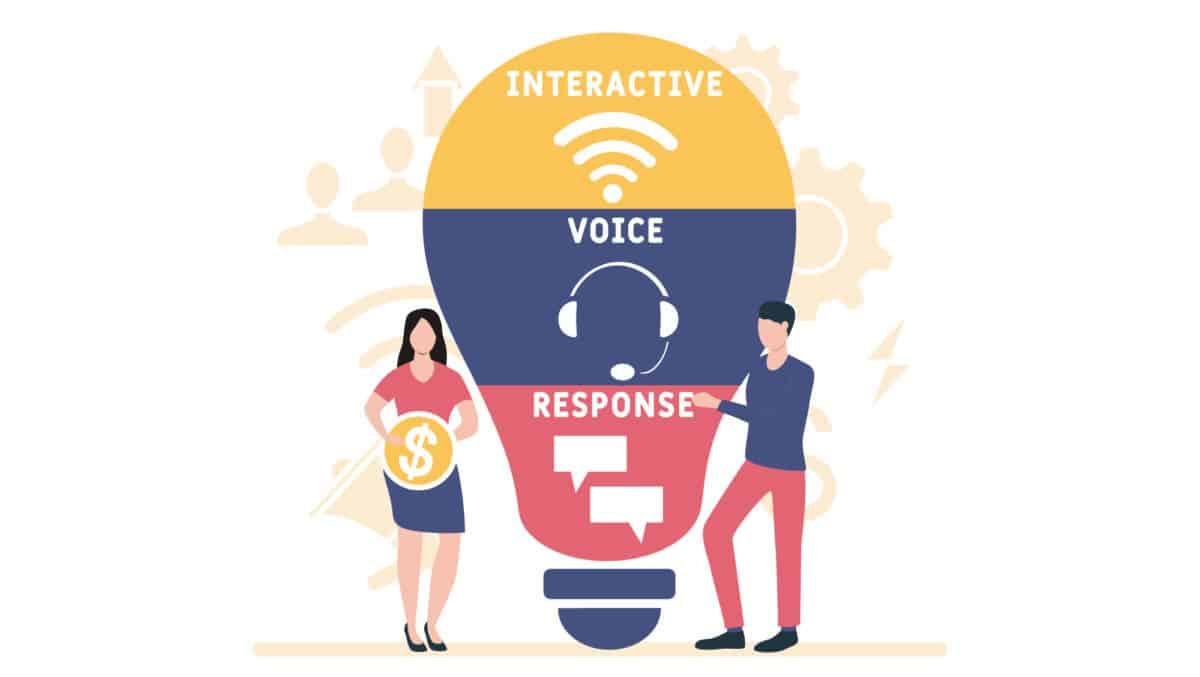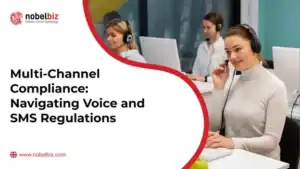The digitalization of customer service is a key issue identified by many companies to retain new clients. Today, it is vital to offer accurate services while maintaining a simple and fluid customer experience. In other words, brands need to do better for less, while ensuring the same level of quality care. The first step starts with call center IVR, a classical system that automatically picks up customers, uses pre-recorded voice messages and broadcasts menus in which they can navigate. Let’s take a look at the advantages IVR can bring and what are its new capabilities in the digital era.
What Can IVR Do For Your Call Center?
Increased Performances
Implementing an IVR at the core of a contact center ensures efficiency. Indeed, sorting customer requests makes it possible to assign to the agents only the calls needing special handling. This way, other platforms are less solicited and have more time to provide solutions to problems raised by customers. By reducing waiting time and increasing customer service productivity, IVR enhances greatly key performance indicators in both inbound and outbound platforms.
Better Handling of Customer Demands
IVR comes with multiple customization possibilities. A contact center can improve customer experience by applying different options. Take customer identification as an example. You can customize your greeting message based on the caller. This means receiving him by his name at the first call, which is a little extra that customers appreciate. This allows the system to reduce waiting time by reducing the number of choices to be made to get in touch with the qualified platform.
Budget Control
In the case of call centers entirely managed by staff, it is required to constantly hire a significant number of employees to meet customer needs. This type of organization inflates heavy budgets while also increasing payroll costs.
The savings made possible by IVR technologies involves both equipment and premises management. While you would have to multiply the number of positions according to the number of agents. You can simply be content with the minimum required for your IVR.
Your Call Center is Available at All Times
Since agents interventions are reduced, contact centers can operate every day of the week and at any time. Your customers or prospects can get answers to some of their concerns and demands without having to wait for opening hours.
IVR is a Multi-Level Technology
Queue management
IVR is also designed to manage waiting times when an agent is not immediately available. The aim here is to avoid dropped calls and customer dissatisfaction.
In case waiting time exceeds a certain duration, IVR can offer to leave a message or propose a call-back, thus reducing waiting times.
Data Collection
Initiating data collection from the IVR will simplify the work of agents, supervisors and make interactions more fluid. For example, asking callers to enter their customer number or identifier will allow prioritizing calls, connecting a customer directly with the person in charge of their file, or even automatically sending a CRM form.
Selfcare
Some requests do not require any particular knowledge but the time spent by your agents to answer them is high. Take as an example the progress of a package delivery: the agent will take a few minutes to look for the file and tracking data, not counting the time it takes to handle the call.
All these actions can be handled directly by an IVR and can therefore be carried out outside your opening hours. Your agents will then be available to respond to more complex and urgent requests.
Surveys
Based on the same principle as interactive menus at the beginning of calls, IVR can offer a satisfaction survey at the end of the call. This survey can address several aspects such as waiting time, or to the conversation, friendliness and efficiency of agents. It is a good method for collecting indicators of on-the-spot satisfaction.
IVR in The Digital Landscape
Change is not easy, nor can it be done fast. However, the pandemic dramatically triggered digital transformation by putting many brands on their back feet. This generated an unprecedented dropout rate and client dissatisfaction for companies that didn’t adapt to the sudden change.
These companies have suddenly become aware of the fragility of call centers too dependent on phoning channels. They also understood that they need to accelerate their transformation. Not only to respond to the crisis engendered by covid. But also to build a longer-term strategy of reducing costs associated with customer management and improving the service quality. As for the others who already invested in omnichannel technologies, it paved the way for bigger opportunities.
Several levers for optimizing the transformation of telephone requests are possible, depending on the stage of the customer journey and the specific challenges facing your call center. The lever that comes first and foremost is Visual IVR.
Visual IVR
Accurate orientation is an absolute must. Whether for customers or agents, there is nothing more annoying than being redirected from one phone platform to another or from one agent to another for a simple request.
Today, with the integration of natural language in IVR, there is theoretically no longer any limit to interpreting and qualifying the intention of the caller. Of course, this requires a significant technological investment so that the IVR is able to understand voice constraints ( such as noise or accents ). Also, it takes time to refine the Natural Language and the potential degraded intention is a big risk.
However, in this voice client journey, it is better to have a visual IVR. Instead of directly presenting the customer service phone number and other contact solutions. Visual IVR is a digital path that makes it possible to understand the reason for contact right away.
You can then directly orient customers according to added value or urgency level of their demand or request. For example, for low-value reasons, you can direct him to self-care or a voice bot. For more urgent requests, you can direct the customer to an agent or a webchat. This is the very essence of omnichannel technology for contact centers.
Orchestrating Everything in an Omnichannel Way
Omnichannel orchestration via Visual IVR has the advantage of qualifying contact patterns in advance and sorting out those with high urgency (for which the intervention of an agent is preferable) from clients with lower urgency, which can then be directed to a self-care digital solution (email, forms, chat, or a callbot ).
Innovation is at the heart of everything NobelBiz does. That is why with our OMNI+ technology, contact centers have a Visual IVR that allows them to direct phone calls to digital platforms, and navigate seamlessly between different communication channels.

Abdelmounim Benharouga has always had a strong passion for writing and digital marketing. He started as a Digital Content Writer part of marketing department then moved to being Customer Success Manager for the African Region within the Nobelbiz team.






